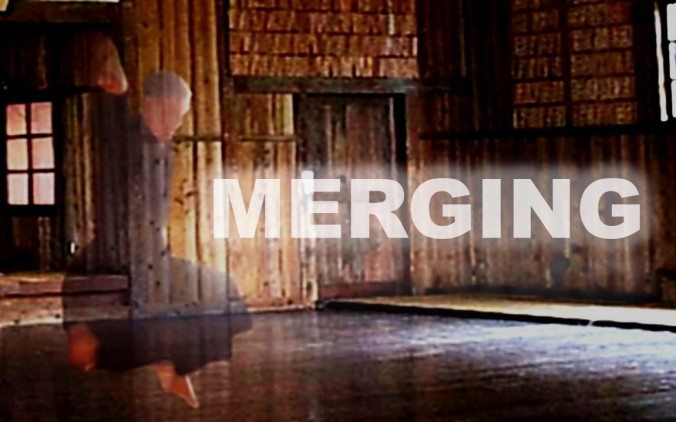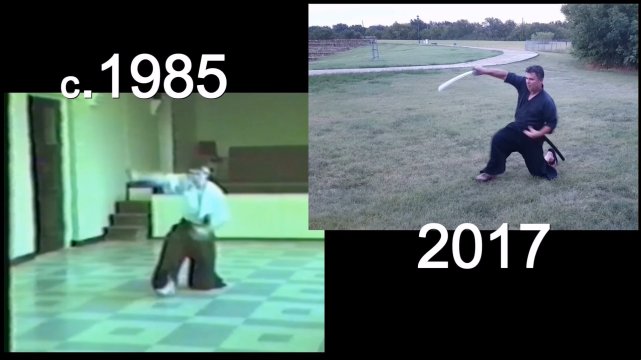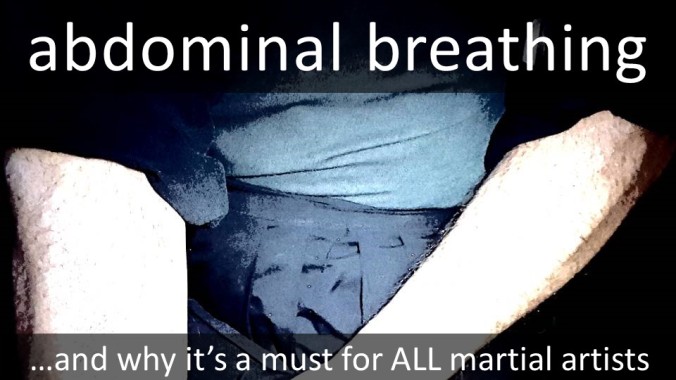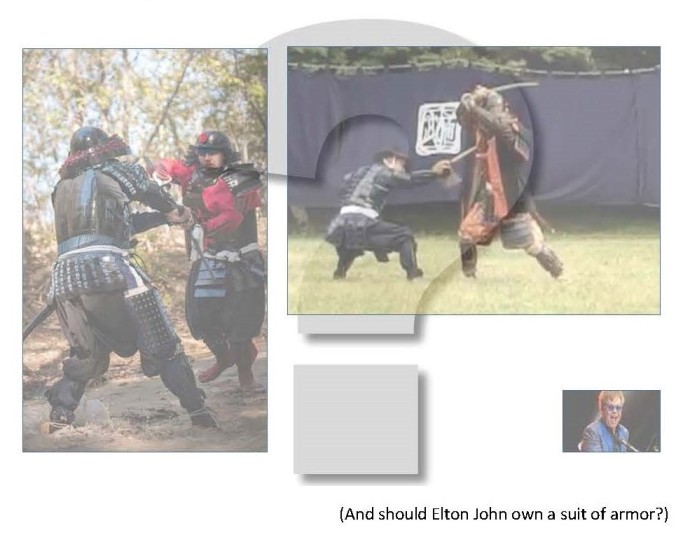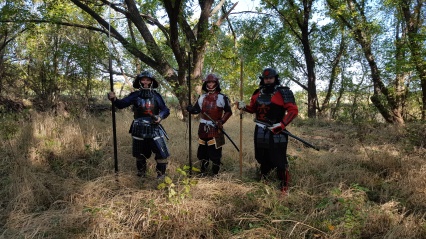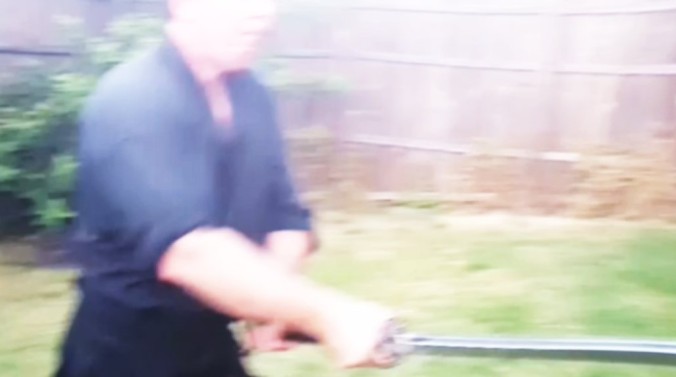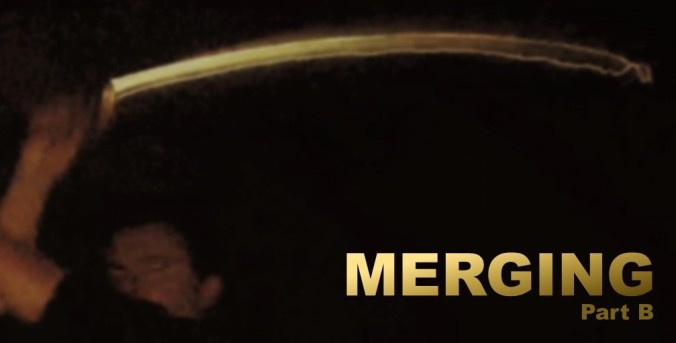
Self-cultivation benefits of employing High-Level EA during iai:
In Part 2a of this series ( Secrets of Iai (Pt. 2a) ) I defined Merging as “a sensation of feeling totally connected to the environment…although it may be more accurate to say it is like being completely not DIS-connected! And actually, both “connected” and “not DIS-connected” are sort of misleading since they imply a duality, but to experience Merging is to feel a loss of self—not a loss of individuality—as one’s surroundings sort of “become” you.”
I also said that this peculiar experience resulted during iai practice from the application of High–Level Environmental Awareness (EA), with High-Level EA defined basically as “being as aware as is possible of all the elements that make up the physical environment you are in”, but that this High-Level EA was different from Situational Awareness because unlike Situational Awareness, Environmental Awareness does not include any “overt, intellectual assessment of the environment in terms of its effects and consequences.”
Part 2a was primarily concerned with the combat-related reasons for utilizing High-Level EA during iai.
What follows here is a discussion of the benefits of High-Level EA for Self-Cultivation.
Now, it might seem that there wouldn’t be much to discuss on that topic, but actually High-Level EA is massively (MASSIVELY) important in terms of using iai for Self-Cultivation.
Why and how this could be is summed-up nicely through some words attributed to the famous, 13th century Zen master Dogen:
“The way of the Buddha is to know yourself; To know yourself is to forget yourself; To forget yourself is to be awakened to all things.”
(btw, I am definitely not suggesting that iai study needs to be done within the context of Zen Buddhism, nor that self-cultivation has to be defined as “spiritual” in nature)
Despite Dogen’s words appearing to be rather esoteric and mystical, in my opinion they are summarizing a simple methodology based upon a profound knowledge of human psychology.
“…to know yourself”
And so let’s begin with what “know yourself” means—in the context of this essay, that is.
It means to know what about your self is your Intrinsic (essential) Self and what part of your Self is cosmetic—and by cosmetic I mean “affecting only the appearance of something [in this case your Intrinsic Self] rather than its substance.” (https://en.oxforddictionaries.com/definition/cosmetic)
What then is your Intrinsic Self? Easy! It is whatever remains when the Cosmetic Self is removed.
Okay then, so what is the Cosmetic Self exactly?
Essentially, it is things like our delusions, our deceptions, our desires, our motivations, our insecurities and even our emotions.
I do very much appreciate that for many people the above leads to a controversial definition of Intrinsic Self since to them much of what I am categorizing as cosmetic are perceived as core components of their individual personalities, and as such part of their Intrinsic Self.
As Star Trek’s Captain Kirk once said…
“…pain and guilt …they’re things that we carry with us, the things that make us who we are. We lose them, we lose ourselves. I don’t want my pain taken away! I need my pain!”
For sure it is a matter of definition, however in terms of this essay defining these types of components as cosmetic is appropriate because in my experience they do eventually seem to be profoundly just that—by the way, being cosmetic does not necessarily mean that they don’t have their uses.
To better understand my perspective it may help to think of your complete, psychological Self as a car.
When we think of our car many things may spring to mind. We might think of its shape, its lights, its tires, the upholstery, the windshield wipers, the seats, cruise control, maybe even the A/C, or these days perhaps the fancy media center.
But compare this to dictionary definitions of a car (or automobile)…
“a passenger vehicle designed for operation on ordinary roads and typically having four wheels and a gasoline or diesel internal-combustion engine.”
“a usually four-wheeled automotive vehicle designed for passenger transportation”
“a passenger vehicle, usually four-wheeled, propelled by an engine or motor that is part of it, esp. an internal-combustion engine, and meant for traveling on streets or roads.”
Based on these definitions, none of the parts of a car I listed above are actually required for a car to be a car.
No doubt they all make driving a car more interesting, enjoyable and/or safer, but they are not required parts of any device that wants to be a combustion-engined, four-wheeled transporter of small groups of people on a modified surface. They are all, in fact, cosmetic.
Which is why a 1908 Ford Model T is no less worthy of being called a car than is a 2018 Cadillac.
Similarly, that which is your Self can also be massively “stripped down” without losing its intrinsic function/substance.
Now, it is one thing to broadly define what elements can be considered cosmetic, but it is typically quite another for an individual to discern all that is cosmetic about their own Selves
This is because—essentially—any attempt at discernment will inevitably involve at least some of those same cosmetic elements.
And I say this involvement is inevitable for three main reasons:
First, the cosmetic elements tend to be the primary motivation for us thinking about our Self at all.
Second, as a species we tend to rather love to use cosmetic elements in our thinking, and most definitely want them present when considering our precious Selves.
Thirdly, even when we try to cut the cosmetic elements out of our thinking, doing so can be incredibly difficult. This is because the cosmetic elements are mixed into the “thing” we use to do our thinking: the virtually incessant stream of babble that is sometimes very aptly referred to as our “chattering monkey mind”
But why does it matter if any part of the Cosmetic Self is involved?
Answering that question brings us to the next part of Dogen’s statement…
“To know yourself is to forget yourself”
Why does it matter if the Cosmetic Self is involved? Short answer: the Cosmetic Self is inherently deceptive. Not only does it provide distorted—if not false—perspectives, but in true “monkey mind” fashion its voraciousness serves to divert, distract and obscure the truth.
Think of it as like asking an auto-mechanic a question about your car’s engine and him/her trying to answer your question in terms of the car’s trim—while also at the same time trying to sell you a more expensive trim…while asking your opinion on the trim of the other cars in his shop.
Or, to put it another way: think of it as trying to get rid of a headache by banging your head against a wall. Or asking a blind person which color shirt looks better on you.
Therefore because the Cosmetic Self is going to invariably involve itself in any attempt at awareness of one’s Intrinsic Self, and because 99.9% of the time this involvement will produce flawed data, in order to “know yourself” you have to also first “forget”—or perhaps more accurately, discard—the Cosmetic Self. “To know yourself is to forget yourself”.
That’s all well and good, but what does this have to do with High-Level EA?
Because High-Level EA inevitably facilitates the aforementioned discarding (or “forgetting”) of the Cosmetic Self.
How this happens is actually simple—conceptually at least.
If you are focused on the outside world to a degree that High-Level EA requires, there can be little to no superfluous conscious mental activity.
This means therefore there is very, very little (possibly zero) introspection, subjective analysis, conceptualization, deliberation, emotion.
Why is this the case?
First, because we all have finite mental resources and High-Level EA is a big drain on those resources. Or, in other words, High-Level EA takes a huge amount of concentration. So, depending on the complexity of the environment and the number and frequency of changes happening in it, AND on the psychological make-up of the individual, it is possible that there just won’t be any surplus resources leftover to apply to anything that isn’t directly related to maintaining High-Level EA—think trying to stream a movie while your computer/device is also doing a full system scan.
The Second reason why High-Level EA should lead to an absence of any of the above mental activities (“introspection, subjective analysis, conceptualization, deliberation, emotion”) is because they all require some level of distraction from the physical environment, and are thereby basically incompatible with High-Level EA. Or, to put it another way, essentially, they make trying to maintain High-Level EA like trying to go forward in reverse gear.
A simple illustration of this incompatibility can be seen in the way that many people—if not almost all—have to frequently glance downwards as they walk through a sensorily busy environment.
And I believe that George Jonas was alluding to the same thing—whether he knew it or not—when describing the Environmental Awareness part of his (alleged) Mossad training:
“…agents rarely smiled. In fact, most of them had unusually expressionless faces. It was very difficult to be scanning with your eyes all the time without immobilizing the rest of your features.” Vengence, George Jonas, Harper Perennial
OK, but how does eliminating “introspection, subjective analysis, conceptualization, deliberation, emotion” facilitate the discarding/forgetting of one’s Cosmetic Self?
Because by eliminating all (or virtually all) of these mental processes you are starving your Cosmetic Self of expression. While the Cosmetic Self may still be present in the background, it is—so long as High-Level EA is maintained—invisible…voiceless…neutralized…robbed of its influence.
Okay, so that establishes the role High-Level EA plays in forgetting yourself, but, where comes iai come into this?
It is true that theoretically High-Level EA can be predictably achieved during many types of pre-arranged physical activity. However, it is much easier—or rather, not so incredibly difficult—to achieve High-Level EA while practicing iai.
Unfortunately, explaining why this is the case is a fairly lengthy endeavor, involving all the other Secrets and so I will not be tackling it properly until the final essay of this series.
And so onto the last part of Dogen’s statement…
“To forget yourself is to be awakened to all things.”
How does High-Level EA during iai practice promote being “awakened to all things”?
Because to be awoken to something is to become aware of it. But both the aforementioned introspective processing and “monkey mind” activity can act—perhaps ironically—as obstacles to becoming aware of a wide variety of things. This is because not only do they limit what you are aware of, but also how much you absorb of what you are aware of AND the manner in which you absorb what you are aware of.
Therefore, when the introspection (aka Cosmetic Self) and the “monkey mind” are taken out of the equation (as it were) greater awareness can rush in unhindered—okay, sometimes it less rushes in than peeks in, then takes very small, slow steps through the door, but the point is that understanding is no longer blocked.
The student can now experience iai without pre-conceived notions, biases, fears or desires on any level. Every aspect of iai is perceived as new—as if from “the center of the circle” (to borrow an Oriental metaphor)—without taint or alteration.
So what does the iai student potentially become aware of?
To begin with, let me quickly mention the potential for a greater, intuitive appreciation of the technical meaning and potential martial realities of the components of an iai kata. I know this doesn’t seem very related to Self-Cultivation, but I mentioned it in the previous essay and punted on providing an explanation since it would have meant delving into pretty-much everything I have so far covered in this essay.
1. Unity and clarity
To varying degrees all parts of iai practice can acquire a new profundity which extends far beyond the martial aspects of iai. High-Level EA (with help from the other Secrets) allows many moments in an iai kata to generate a sense of far-reaching completeness and fulfillment reminiscent of the “seeing the universe in a drop of water” phenomenon.
While in my opinion it is not helpful to say any more about what this extraordinary experience feels like, what I can add is that like the Merging this new awareness helps create, the experience is (at least for me) at first as disquieting as it is exhilarating.
I actually think it is very similar to—or perhaps even on occasion the same as—those moments of clarity and/or epiphany that people sometimes unexpectedly experience when under great stress—such as when in combat:
“That there is a potential relationship between danger and spiritual revelation is reflected in the experiences of some combat veterans.
These include feeling like they discovered “the momentous truths about ourselves and this whirling earth to which we cling”, or that their ” ‘I’ passes insensibly into a ‘we’ “, or they feel so much “part of this circling world”, so much alive that, in seeming paradox, death no longer matters to them.””
Flawless Deception: the truth behind the samurai schools ( https://www.amazon.com/Flawless-Deception-behind-samurai-schools-ebook/dp/B014OMZ0EA )
In my opinion this effect is simply the disorientating result of the individual not being familiar with existence when devoid of the influence of the Cosmetic Self and the suppression of the “monkey mind”—metaphorically sort of like how I momentarily felt many years ago when drunk as a skunk I woke-up and rolled out of my bunk in a pitch-black room, only to realize a moment later when no floor greeted my hands that I was actually on the top bunk.
And lastly, these transcendent-type experiences I am claiming can eventually be part of iai practice do not need to be limited to just iai practice.
Once an individual has gained the ability to manifest High-Level EA during iai there are many other non-martial art-related activities it can potentially be integrated into, and this in turn produces some fascinating changes of perspective on everyday living…
2. A whole new world!
I have read that often the reason that babies find great joy in what seems to us to be simple and familiar events is because they have not yet acquired a “mature” human’s blasé attitude to the physics that govern our world. So for example, I imagine that to babies it is still unexpected and extraordinary that when they knock over a cup of milk the milk does not stay “upright”, but miraculously changes shape and transfers itself to the surface the cup is on! Truly incredible stuff.
Similarly, I suspect that could we remember our infant months we would recall the thrill of learning to control our bodies; the hilarity of being able to just want one’s fingers to wriggle and whammy, it happening, or the feeling of amazement at being able to roll-over, sit-up, and finally to be able to STAND!!!!
(I can’t help but be recall Douglas Adams depiction of God in his Hitchhiker’s Guide to the Galaxy series of books)
Sadly, as we mature familiarity with such incredible events may not breed in us actual contempt for them, but we absolutely stop thinking about them unless for some reason we are no longer able to replicate them due to injury or illness.
High-Level EA may not always be enough on its own to allow us to return to an entirely naïve appreciation—and consequent exhilaration and wonderment—of familiar uses of our bodies and the physical laws of our world, but in my opinion it is generally an essential component to going in that direction. And the more practice one gets at viewing life while accompanied by High-level EA the more of it becomes again fresh and extraordinary.
While the potential examples of where this can apply are virtually unlimited, beyond the types of examples just mentioned I would add (because it is a favorite of mine) a greatly enhanced ability to perceive the incredible realities of massive and/or distant natural phenomena such as large bodies of water, or mountains, or clouds, or celestial bodies.
To be able to look afresh at these things without intellectual or scientific familiarity, and thus—paradoxically—being better able to “sense” their power, their beauty, their unfathomable weight or distance is a literally awesome experience.
3. Patterns
The next major change in life that High-Level EA brings is an awareness of patterns in your environment. Because, as mentioned, you are able to absorb more external information and also process it more effectively—which includes greater objectivity—it becomes possible to be considerably more aware of when things change—or, to put it another way—to be very sensitive to contrast.
The advantages to this are extremely far-reaching and they deserve their own essay—if not a whole book—but here I shall limit myself to saying how especially impactful enhanced pattern appreciation is in regard to inter-personnel communications.
Knowing things about people of course helps enormously when establishing what is often referred to as rapport. Creating the complementary state with someone that rapport denotes requires a mixture of elements, however it becomes easier and easier the longer you spend with someone IF you are constantly building a database of things like their physical characteristics, facial responses, body language. On the most simple level, you are able to notice and—if appropriate to rapport—point out to them that you have noticed a change. Nothing ground-breaking there, right? Absolutely, but it is amazing how small a database people typically build for those they have interactions with everyday. Sure, they may notice something glaring like a newly shaved head, or a cast, but what about a newly acquired slight stoop, or a persistent increase in the typical width of a smile, or changes in how they walk that indicates a different mind-set? All such things may not mean anything in isolation but they all contribute to the overall communication strategy you adopt with someone.
And the great thing is that while you might choose to consciously ask one’s self if any changes in pattern have been noticed, generally notification of any change comes without request.
4. Cosmetic compromise
And lastly, being able to acquire High-Level EA means that you become progressively more aware of when your High-Level EA is compromised by your Cosmetic Self—which will happen frequently.
Because of this you begin to learn the full scope of influence your Cosmetic Self has on your life—and HAD on your life—if you allow it.
This degree of appreciation is likely impossible without sufficient experience of the contrast in perception of events in your daily life that removing the Cosmetic Self (and a goodly amount of the monkey-mind) allows.
If this phenomenon is difficult to process, imagine that whenever you drove anywhere it had ALWAYS been on a very busy and extremely fast-moving freeway, and that it had ALWAYS been raining heavily and you had ALWAYS been playing music loudly and your car was ALWAYS full of passengers all arguing passionately about a variety of fascinating subjects AND everyone else on the road ALWAYS appeared not only oblivious to the torrential rain but also to your car’s existence—oh, and you had only ever driven at night, and nobody had ever bothered to invent dimmed headlights.
Then think about the scenario without the rain. Then subtract the music. Then make your passengers strangely respectful of your need to concentrate on driving and have them sitting quietly. Then bring the sun up and remove about 50% of the traffic.
Ahhhh….
Then bring everything back again.
Because of the experience of contrast, your “old” driving scenario is going to be viewed by you differently. Generally it is going to be considerably less tolerable, and as a result you are going to try your damnedest to get the new scenario back —I say “generally” because for various reasons, some healthier than others, we sometimes prefer adverse conditions.
Also, while during all the years of the nightmare driving narrative you might have tried to imagine the new one, if you believed that driving was intrinsically like that for everyone, and no-one had ever conceptualized in any medium an alternative, how accurate would your imagined version be? (Ever had a massage and only afterwards realized you had been tense in some part of your body? If it was long-term, persistent tension, prior to the massage you likely would have sworn blind that there was no tension there…)
And there is one other extremely important aspect to using High Level EA to shut-out your Cosmetic Self: the effect it has on your future. The more of your past is less tainted by the influence of your Cosmetic Self, the less likelihood there is that when you remember past events—whether recent or distant—that they will have the necessary elements to fuel Cosmetic type traits. What I mean by this is that the memories will contain more fact and less subjective augmentation added at the time of acquisition! There is a reason why generally the more emotional a witness was when they saw a crime, the less accurate their testimony will be.
To conclude…
It should be stressed that as with Imposing Threats —and, indeed also with the subject of the next essay—iai practice is perhaps uniquely suited amongst pre-arranged physical activities to serve as a vital pre-cursor to learning how to apply High-Level EA outside of iai. Further, predictably facilitating the just -discussed increases in self-knowledge, knowledge of others and the appreciation of the nature of existence requires the ability to experience life through the crystal-clear lens of High-Level EA.
I also want to reiterate that although for the purposes of clarity of explanation I have separated all the Secrets into their own essays, in reality they rarely—if ever—truly work in isolation from each other.
And lastly, as I said regarding the ability to Impose Threat during iai, a crucial component to infusing iai with High-Level EA is a sufficient involvement of hara. In my opinion, while sheer mental effort may yield some level of success towards achieving High-Level EA (or any of the Secrets), ultimately the ceiling will always remain very low—the endeavor being very much akin to trying to drive a nail into wood using a screwdriver.
Phil Trent (https://www.facebook.com/profile.php?id=100009132148739)
